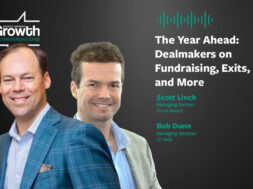Inside the Future-Ready Family Office
As the wealth of family offices explodes, that enormous growth drives collaboration, increased sophistication and changing needs in the space

Since 2019, family offices have grown enormously—not just in number, but in total assets under management—driving a trend of institutionalization and heightened sophistication.
According to Deloitte’s 2024 report, “Defining the Family Office Landscape,” family offices have exploded to roughly 8,030 single family offices globally, a 31% increase since 2019, and $3.1 trillion in AUM globally, up from $1.9 trillion in 2019. And those numbers are likely to continue to skyrocket upwards: Deloitte predicts the AUM of family offices will be $5.4 trillion by 2030, with the number of offices hitting 10,720.
That stunning growth rate is shifting how family offices operate and how they look. Christina Staples, family office leader with Deloitte UK, notes that the rise of private wealth is driving professionalization in the space. “Wealthy families, their businesses and their investments are increasingly global in their outlook,” she notes, adding they continue to establish additional branches, add employees, shift their investment habits and become more professionalized.
Growing Gains
Private equity investments, in both funds and direct investments, are popular among family offices. According to a survey from BNY Wealth, just under half (48%) of family offices with AUM under $1 billion plan to increase their exposure to private equity funds in the next 12 months. That number is 39% for those with AUM over $1 billion.
Vishal Verma, managing partner with Edgewood Ventures, a single family office in Silicon Valley, believes that family offices’ appetite for risk tolerance drives growing interest in private equity and venture capital. “They like to take risks, at the end of the day,” he says. “They started a company with nothing, and they made the millions of dollars they made, so they’re okay with it.”
Fernando Silva, vice president of M&A and capital markets with Lockton Companies, an insurance brokerage, and someone that works closely with family offices, observes that within his network, families have a strong desire to invest directly. “One thing that I see is that families increasingly look to get closer to the assets that they want to co-invest more into, or just build out their portfolio with their own investment teams,” he notes.
The BNY Wealth survey bore out that observation, finding that 62% of family offices made six or more direct investments the previous year, and 71% plan to make the same number or more in the coming year.
Astrid Soto, chief investment officer at a private family office, says she’s also seeing more club deals as families with more experience bring new families into the fold. These collaborative investments are likely to be a growing trend, because “there’s a sum of parts (with a family office) that can be more unique and flexible, versus a private equity fund that is stuck with very specific structures because they’re playing with their LPs’ money,” she says.
Family offices are also more willing to take a longer view on investments, not bringing the same sense of urgency and prescribed timeline to deals that PE firms might. “You’re talking about multi-generational families that didn’t just make money overnight,” says Soto. “That really changes the dynamic of how (they) approach partnerships.”
As family offices step into more deals that typically would have been within private equity’s wheelhouse, their offices, staffing and strategy will need to evolve. “Some families are moving into the world of direct private equity, often competing with private equity managers,” says Ben Phillips, senior vice president and family office specialist with PIMCO. “While there have been growing pains associated with building capable teams, investment processes and deal sourcing, the most successful families I have observed maintain a narrow focus on their private equity mandates.”
While there have been growing pains associated with building capable teams, investment processes and deal sourcing, the most successful families I have observed maintain a narrow focus on their private equity mandates.
Ben Phillips
PIMCO
Changing Needs
As family offices grow and flex new muscles, experts say their advanced sophistication requires better tools. “Technology continues to be a pain point for many family offices,” Phillips says. “While there are numerous providers, I have yet to learn of a well-integrated tech stack for family offices.”
Silva agrees, saying most “aren’t thrilled” with the technology they’re using, which is often a kind of Frankenstein’s monster of multiple platforms stitched together. Many family offices are hopeful that new tech platforms and advancements in AI may improve the solutions available to them.
Family offices are also looking to add staff. The Deloitte report found that 40% of family offices were focused on hiring, with 29% shifting towards outside, non-family talent, reflecting the growing sophistication in the space. Outsourcing is also common, with 34% of family offices planning to outsource additional services this year.
Family offices are sourcing their staff from financial services, accounting and consulting, according to Deloitte, but soft skills are also crucial for success. Verma notes that family offices are not just looking for the best of the best, but well-connected people who are familiar with the game of access.
“The uniqueness of a family office role requires a combination of high IQ and EQ,” agrees Phillips. “Many folks are surprised by the diversity of responsibilities required in a family office role…This requires individuals who are quick learners and capable of managing multiple priorities simultaneously.”
But finding that talent can be a major challenge, and Staples lists it as a top-three risk for family offices: “They are having to work harder to make themselves attractive to potential candidates, often competing with larger, well-known players such as the more traditional investment firms.” In response, family offices are seeking to differentiate themselves by refining their employee value proposition and redefining what being a part of the organization represents.
Beating the Curse
Another age-old risk continues to worry leaders at family offices. Deloitte’s report notes that the so-called “third-generation curse”—the instances where families lose their wealth by the third generation—remains a major concern for families.
“We’re seeing more and more that a lot of families have become aware of the ‘curse’ concept…and so they’re pushing, ‘If we do not pivot, we will die,’” says Soto. “These dynastic families have been around for many, many generations, and they’ve had to endure recessions, depressions, black swan events. That nimbleness has pushed them to think: How can we prepare our family members to combat anything that comes at them?”
Family offices are responding to the “curse” by concentrating on key values, excellent education and pushing family members to work outside of the family business with limited family support, says Phillips, noting a trend toward multi-generation, values-based succession plans. “Families are increasingly focusing on how to discuss wealth and values, with the goal of ensuring that the next generation is well-prepared to manage family assets. As some principals put it, the aim is to ‘not mess up the kids,’” he says.
“A Dynamic Beast”
Of course, while these trends paint a story in broad strokes, anyone familiar with the space will point out that family offices differ significantly from one to the other, making large-scale takeaways challenging to present without qualifications. Family offices can be as difficult to generalize as families themselves are.
“’Family office’ is almost a meaningless term in some sense, because it’s just taken shape in so many different ways,” says Silva.
Soto agrees: “I think there’s one thing that people can’t get their heads around, and that’s that no family office is the same. They may have similarities…there are those that can be grouped, but I think that’s something to consider when you’re painting a picture that is broad, because it’s a very dynamic beast that is evolving and there are so many different pieces to it.”
Hilary Collins is ACG’s Associate Editor.
Middle Market Growth is produced by the Association for Corporate Growth. To learn more about the organization and how to become a member, visit www.acg.org.


